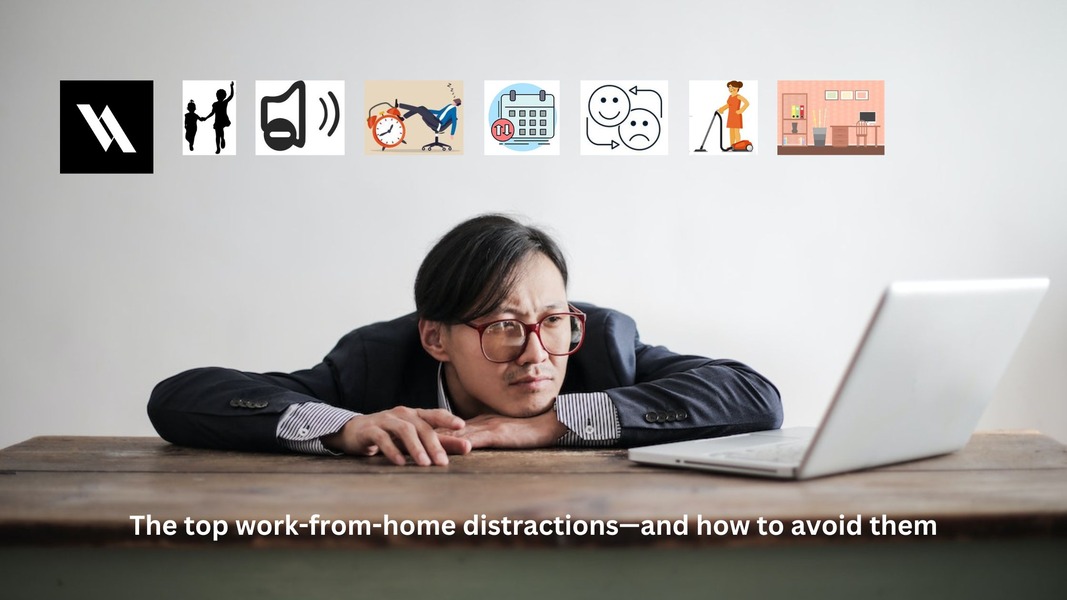We now operate in a very different way as a result of the COVID-19 epidemic, with many people switching to remote work from home. Working from home has advantages like a flexible schedule and the freedom to wear whatever is most comfortable, but it also has its share of difficulties. Maintaining concentration and productivity in a noisy setting is one of the hardest obstacles. The major work-from-home distractions will be discussed in this essay, along with coping mechanisms.
Contrasting working from home with doing office work
When comparing working from home with working in an office, there are many advantages. For instance, you can work in casual attire, you don’t have to deal with a long commute, and you have the freedom to choose your own hours. However, working from home has its drawbacks as well, such as the absence of in-person interactions with coworkers, the difficulty of separating work from personal life, and a higher risk of distractions.
The biggest work-from-home distractions
Children: It can be difficult to strike a balance between work obligations and parenting responsibilities when you have kids at home.
Noise: Distracting factors like noise might make it difficult to concentrate.
No Separate Room: It might be challenging to establish a boundary between work and family life in the absence of a separate workspace. When you do not have a separate space for work, it can be difficult to transition between work mode and relaxation mode. This may make you feel as though you are never truly taking a break from work. Additionally, working in a busy part of your home may be tough to concentrate on if you don’t have a separate room.
No Time Table: Without a fixed routine, it’s easy to lose direction and concentration. Setting boundaries between work and personal time can be challenging while working from home. As a result, you can end up working long hours or not producing as much as you could. It can also be challenging to prioritize work and successfully manage your time without a defined timetable.
Mood swings: Working from home makes it easy to feel down and go through mood swings.
Chores: Household tasks can be tempted to be completed during working hours.
Procrastination: Working from home makes it easy to put off tasks because there is no boss or group of coworkers to hold you accountable.
Those in the family: Concentrating on job obligations while family members are present might be challenging.
Social media: With social media platforms at our fingertips, it’s easy to get sucked into scrolling through feeds during work hours.
Coping strategies for work-from-home distractions
Take care of your children.
Plan a schedule with specific play and activity times for your child. To keep your child interested while you work, use educational materials like instructional TV shows or apps. If you need to, hire a babysitter or arrange your child for daycare.
Reduce the noise.
Invest in some earplugs or noise-cancelling headphones to shut out outside noise. In order to reduce distractions, shut the doors and windows. If loud noises frequently irritate you at work, think about soundproofing the area.
Get a separate room.
Set up a temporary workspace in a peaceful section of your house. For a dedicated workspace, use drapes or room dividers. Think about setting up a workspace somewhere, such as a coworking space or library.
Create a time table.
Make a daily or weekly plan that lists your obligations at work, breaks, and personal chores. Set alerts or reminders to assist you in staying on task. To divide your workday into digestible portions, use time-management techniques like the Pomodoro Technique.
Control Mood Swings.
To combat feelings of loneliness, stay in touch with friends and coworkers via video calls or chat apps. Take regular breaks to rejuvenate and look after yourself. If your mood fluctuations are ongoing, you might want to talk to a mental health expert.
Schedule your chores.
Establish boundaries for yourself and approach your downtime as if it were work time. Consider hiring a cleaner or ordering groceries online as examples of household duties you can outsource. To reduce distractions, schedule domestic tasks during allotted breaks.
Avoid Procrastination.
Make clear goals for yourself and divide them into manageable halves every day. To organize your to-do list, use task management applications like Trello or Asana. Utilize time-tracking applications like RescueTime to monitor your productivity and hold yourself accountable.
Inform the family.
Tell your family members when you’re working and when you’re available, and establish clear boundaries with them. When you’re busy, think about using a visual indicator like a “Do Not Disturb” sign to let people know. To reduce distractions, set aside special family time outside of working hours.
Create social media activity hours.
Set aside set periods of the day to check your social media accounts, and use apps to prevent access during working hours. Reduce distractions from social media accounts that are not linked to your business by using the “mute” or “unfollow” options. To restrict your access to distracting websites, think about utilizing browser extensions like Freedom or Stay Focused.
Conclusion
Working from home can be both advantageous and disadvantageous. You can make the most of your work-from-home experience and maintain attention and productivity by being aware of and tackling the major work-from-home distractions. Always remember to establish limits, plan your time, and use tools and strategies that are effective for you. You can succeed in a work-from-home setting if you have the correct attitude and strategy.









